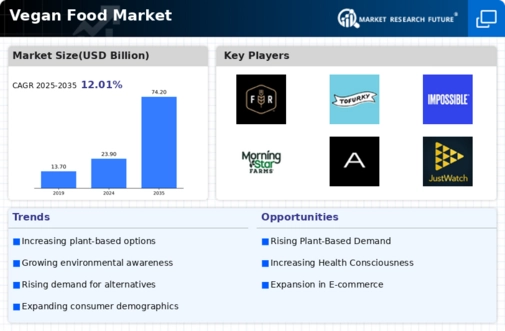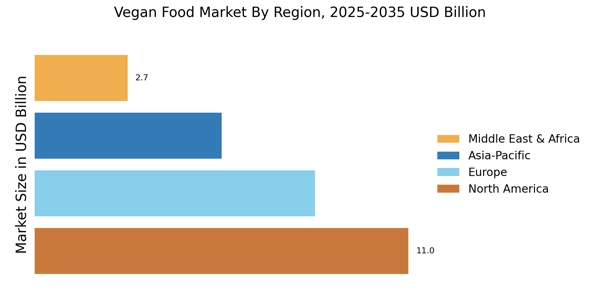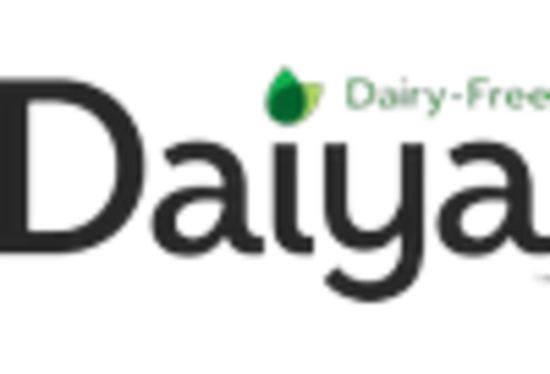The Vegan Food Market is currently characterized by a dynamic competitive landscape, driven by increasing consumer demand for plant-based alternatives and heightened awareness of health and environmental issues. Major players such as Beyond Meat (US), Impossible Foods (US), and Oatly (SE) are strategically positioned to capitalize on these trends. Beyond Meat (US) focuses on innovation in product development, continuously expanding its portfolio to include new meat alternatives that appeal to a broader audience. Meanwhile, Impossible Foods (US) emphasizes partnerships with major food service providers, enhancing its market penetration and brand visibility. Oatly (SE), on the other hand, has adopted a regional expansion strategy, targeting emerging markets to diversify its consumer base and increase its global footprint. Collectively, these strategies contribute to a competitive environment that is increasingly centered around innovation and market responsiveness.
In terms of business tactics, companies are increasingly localizing manufacturing to reduce supply chain vulnerabilities and optimize distribution efficiency. The market structure appears moderately fragmented, with a mix of established brands and emerging players vying for market share. This fragmentation allows for diverse consumer choices but also intensifies competition among key players, who must continuously innovate to maintain their positions.
In August 2025, Beyond Meat (US) announced a partnership with a leading fast-food chain to introduce a new line of plant-based burgers. This strategic move is significant as it not only enhances Beyond Meat's visibility in the fast-food sector but also aligns with the growing trend of consumers seeking convenient, plant-based options. Such collaborations are likely to drive sales and reinforce the brand's position as a leader in the market.
In September 2025, Impossible Foods (US) launched a new product line aimed at the retail sector, featuring ready-to-cook plant-based meals. This initiative reflects a strategic pivot towards direct consumer engagement, allowing the company to tap into the growing demand for convenient meal solutions. By diversifying its offerings, Impossible Foods is positioning itself to capture a larger share of the retail market, which is increasingly competitive.
In July 2025, Oatly (SE) expanded its operations into Asia, specifically targeting the Chinese market with localized product offerings. This expansion is crucial as it not only opens new revenue streams but also positions Oatly to leverage the rapidly growing demand for plant-based dairy alternatives in the region. Such strategic moves indicate a broader trend of companies seeking to globalize their operations to mitigate risks associated with market saturation in their home countries.
As of October 2025, the competitive trends in the Vegan Food Market are increasingly influenced by digitalization, sustainability, and the integration of artificial intelligence in product development and supply chain management. Strategic alliances are becoming more prevalent, as companies recognize the value of collaboration in enhancing innovation and market reach. Looking ahead, competitive differentiation is likely to evolve from traditional price-based competition to a focus on technological advancements, sustainability practices, and supply chain reliability, reflecting the changing preferences of consumers who prioritize quality and ethical considerations.


















Leave a Comment